Richly savory with notes of fresh thyme and sweet bay, this fool-proof chicken broth recipe is both easy and delicious. You can sip it on its own or use it to make nourishing soups such as Wild Mushroom Soup or Tomato and White Bean Soup.
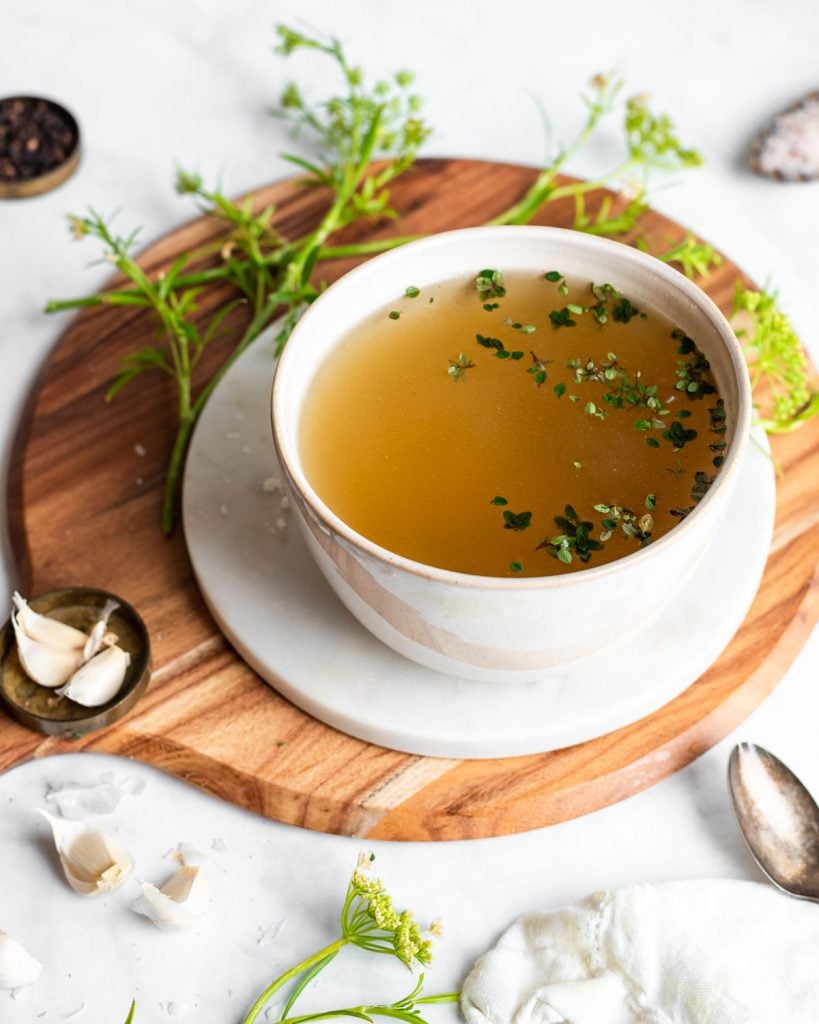
Jump to
What is it?
Unlike bone broth, which is made from bones, chicken broth is traditionally made using a whole chicken or the meaty parts of the chicken. It simmers for a shorter period of time and has a delicate flavor. The recipe below also includes onion, garlic, and herbs which improve the flavor of the broth and give it an element of richness.
Tips for good broth
If you can boil water, you can make good chicken broth. The process is both simple and straightforward. Yet, there takes some nuance and skill to make a homemade chicken broth.
- Scrub the chicken with salt. Scrubbing the chicken with coarse salt helps to dislodge any bits of debris from the chicken's skin that could muddy the flavor of the broth. This is especially important if you're using a pasture-raised chicken from a local farm, as they tend to have more debris (such as small feathers) attached to the bird.
- Boil it twice, discarding the first broth. While it seems wasteful to boil the bird, discard the broth, and boil it again, this process produces particularly good results. Blanching the bird improves the flavor and clarity. If you skip this step, your broth may be muddy in flavor and appearance.
- Skim any foam that rises to the surface. When you boil a raw chicken, you'll find that a gray foamy substance floats to the surface of the pot. This scum is made up of protein and fats, and it can introduce off-flavors to your broth. Removing it improves the broth's flavor and color and clarity.
- Add most vegetables and herbs at the end. With the exception of onion and garlic, you should add most vegetables and herbs toward the end of cooking. If you add them at the beginning, they can make your broth taste overcooked, bitter, and unpleasant.
- Allow plenty of headspace when freezing in jars. Because water expands when frozen, your broth will expand in the freezer. Allow at least two inches of headspace and use a wide-mouthed jar when freezing in glass.
- Reserve the chicken meat. Once the chicken cools to room temperature, you can safely remove the meat and use it for chicken salad, chicken chili, or other dishes calling for leftover cooked chicken.
- Add salt just before serving. Chicken broth tastes better with a little sea salt; however, add it at the very end right before you serve the broth. Since liquid evaporates while the broth cooks, adding it too early may result in an overly salty flavor.
Get the Book
Our best-selling cookbook, Broth & Stock, guides you through making a dozen master recipes (for everything from bone broth to seafood stock) with guidance on how to use them to make amazing soups, stews, risottos, and more. It's everything you need to know about nourishing broths.
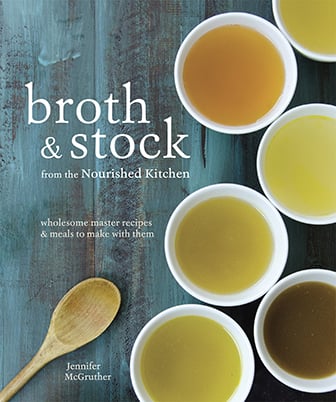
Variations
Lemongrass Ginger Chicken Broth. Add a 2-inch knob of chopped ginger to the stock pot along with the garlic, onions, and peppercorns. Then skip the thyme and bay, and add a 6-inch slice of lemongrass and 6 chopped green onions to the last half hour of cooking.
Vegetable-Rich Chicken Broth. Add 3 chopped carrots, 5 chopped ribs of celery, and a bunch of parsley to the broth to the last half hour of cooking.
Parmesan Broth. Add the rind of a hunk of parmesan cheese to the broth pot along with the garlic, onions, and peppercorns. It gives chicken broth a rich savory note, but may yield a cloudy result.
Try these other broth recipes next
Common Questions
Store homemade chicken broth by pouring it into mason jars. If storing in the refrigerator, allow 1 inch of headspace and use it within 5 days. If storing the broth in the freezer, allow 2 inches of headspace to allow for expansion and use it within 6 months.
Homemade chicken broth will last about 1 week in the fridge and up to 6 months in the freezer.
Boiling it once, and discarding the water, before boiling the chicken a second time improves the flavor and clarity of your broth.
Traditionally, chicken broths such as the recipe above were sipped on their own as a restorative. You can add chopped herbs and a pinch of sea salt for seasoning. Or, you can use it as the base for soup recipes.
It's also excellent as the broth component of sourdough stuffing, especially when you serve it with a slow-roasted chicken.
As with most foods, your nose knows. If the broth smells putrid or sour, it's likely bad. It may also take on a viscous texture or turn cloudy.
If your chicken broth gels in the fridge, that's a good sign. It indicates the formation of gelatin, and it will return to its liquid state when you heat it on the stove.
Wine gives the chicken broth a deeper flavor and a punch of acidity. If you avoid alcohol, you can add a squeeze of lemon instead.
If you have a leftover chicken carcass, you can use the carcass to make bone broth which relies on bones rather than meat. True broth is meat-based and warrants the use of a whole chicken.


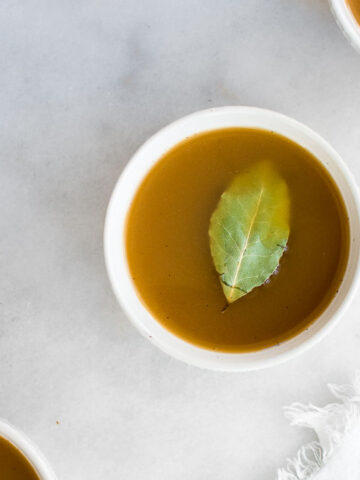
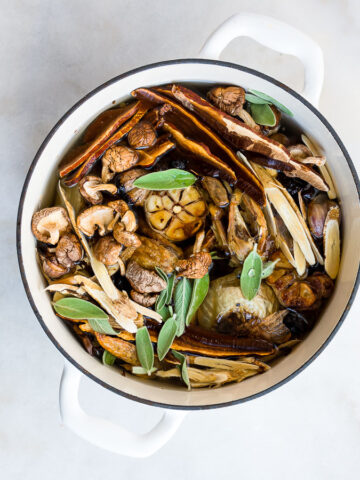
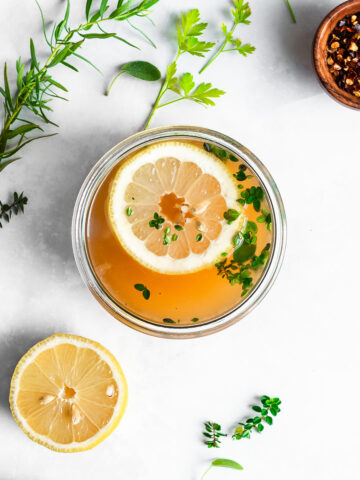
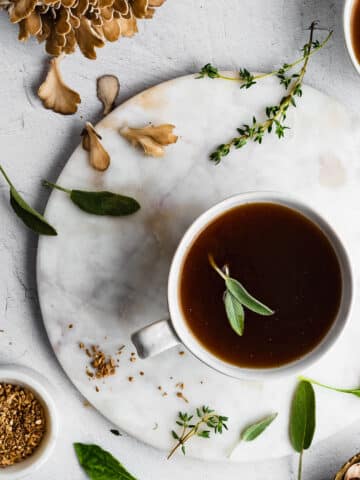
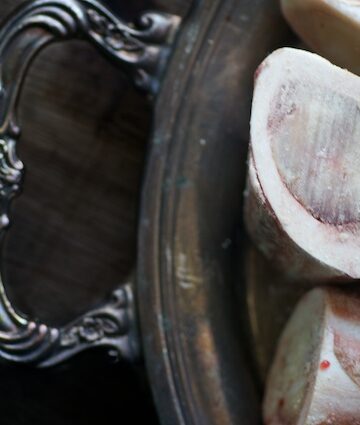
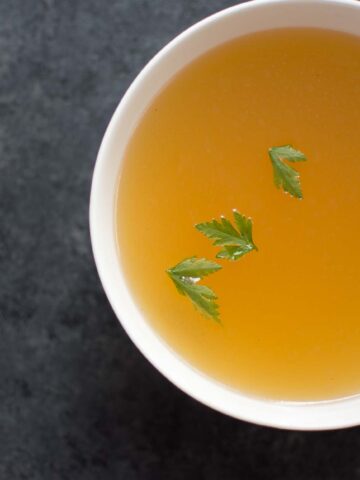
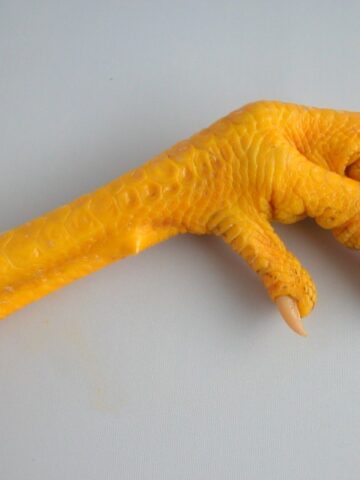
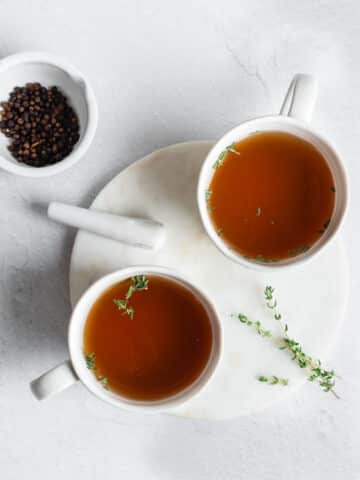
MIMarshall says
Can it be canned? Does it need to be pressure canned?
Jenny McGruther says
Yes, you can can it. However, all broth is low-acid and must be pressure canned. Reach out to your local extension office for specific guidance.
Elaine says
You are really making STOCK, not broth. When you use the meat/poultry to make the liquid, it is called STOCK. When you use the bones, it is considered broth. To clarify more fully, broth is made with 80% bones and 20% meat. Stock is made with 80% meat and 20% bones. STOCK is what is used in the stages of the GAPS diet because it is sooooo healing for the gut!
Jenny McGruther says
Hi Elaine,
I mean, you can totally quibble over semantics if you want. Like, that's cool if you want. But, you're wrong.
Here's the deal:
1. Bone broth is made with mostly bones and it is cooked a longer time. It is, essentially, a long-cooked stock.
2. Stock is made with mostly bones and is cooked for a shorter time.
3. Broth is made with mostly meat (and meaty bones) and is cooked for a shorter time.
4. Meat stock is the name GAPS diet enthusiasts call broth.
Emily Barrett says
I still don't get why you'd have to throw away the first broth, but I did it anyway, and it came out perfect and clear. So I guess that's why?
Dove says
Love this recipe
Amber says
So, this was pretty good. I wasn't sure about the whole boiling twice thing, but it turned out really good. I also didn't have wine, but I used a little lemon juice and it came out nice.
Heide Linde Horeth says
What about using chicken feet? I haven't done this but my "old world" chef friend claims it's essential.
Jenny says
I don't typically use chicken feet in my broth, but I will add them to bone broth or (better yet) make an entire pot of chicken feet broth: https://nourishedkitchen.com/chicken-feet-stock/